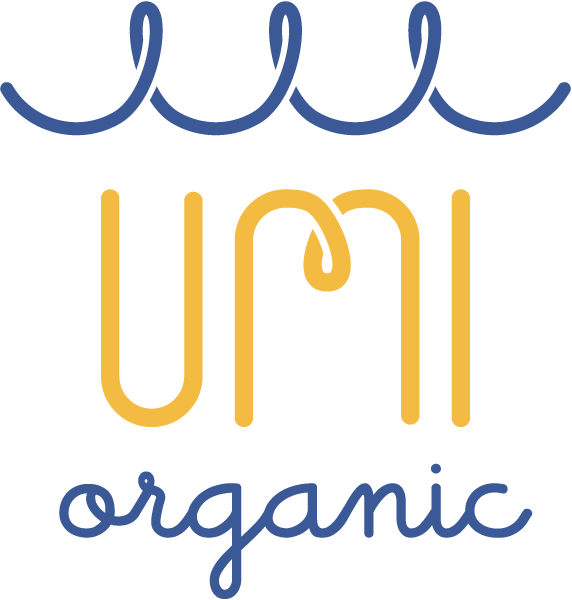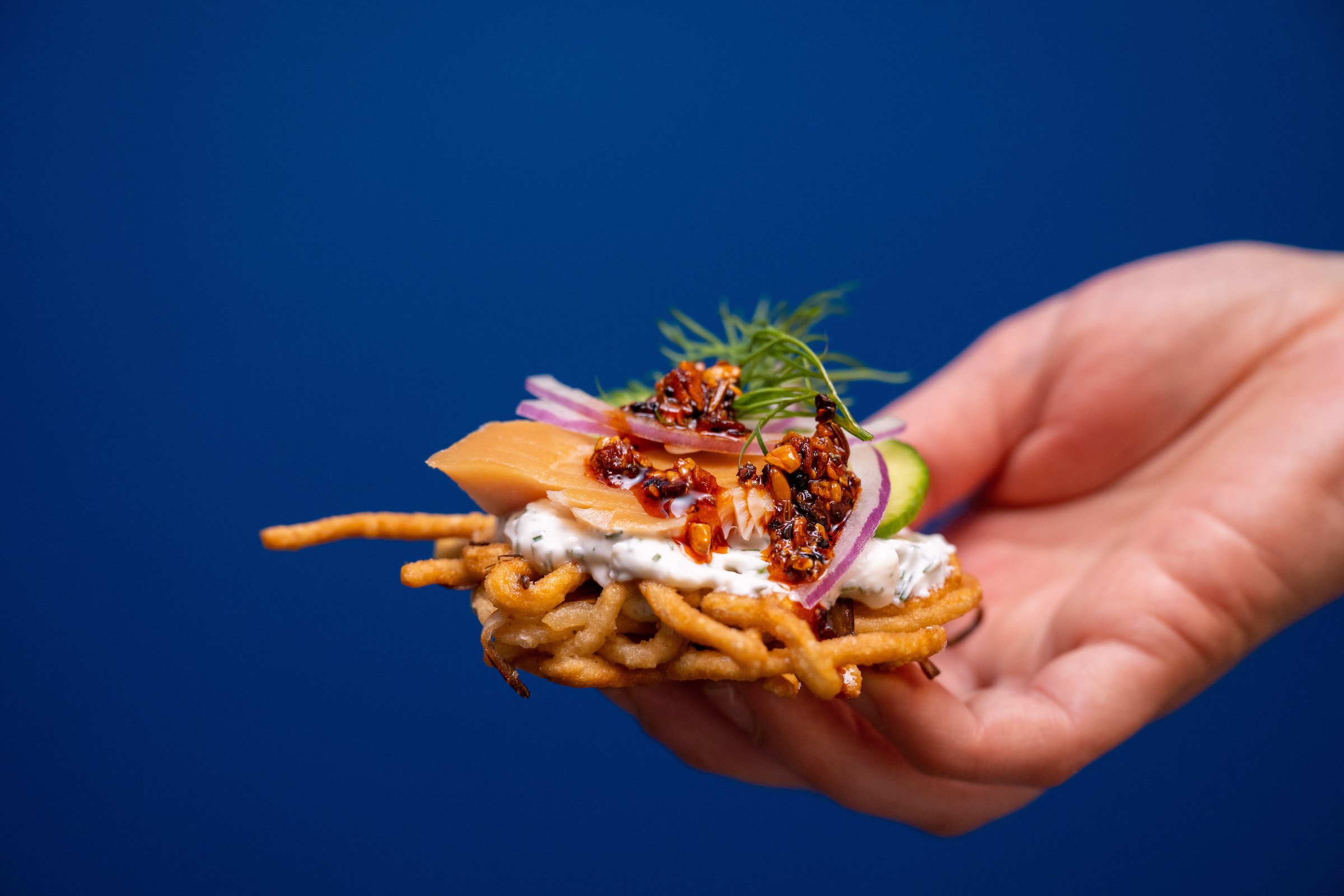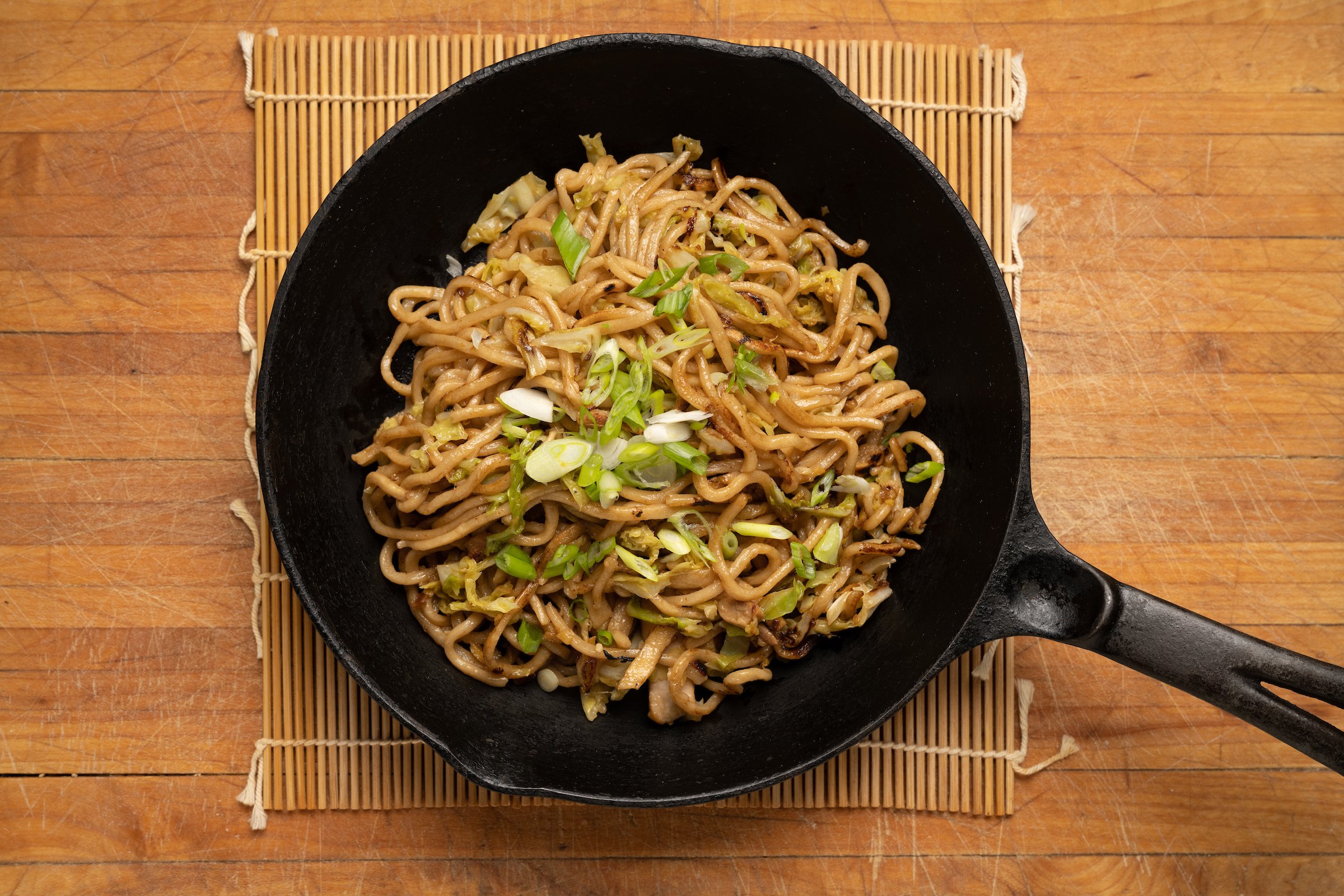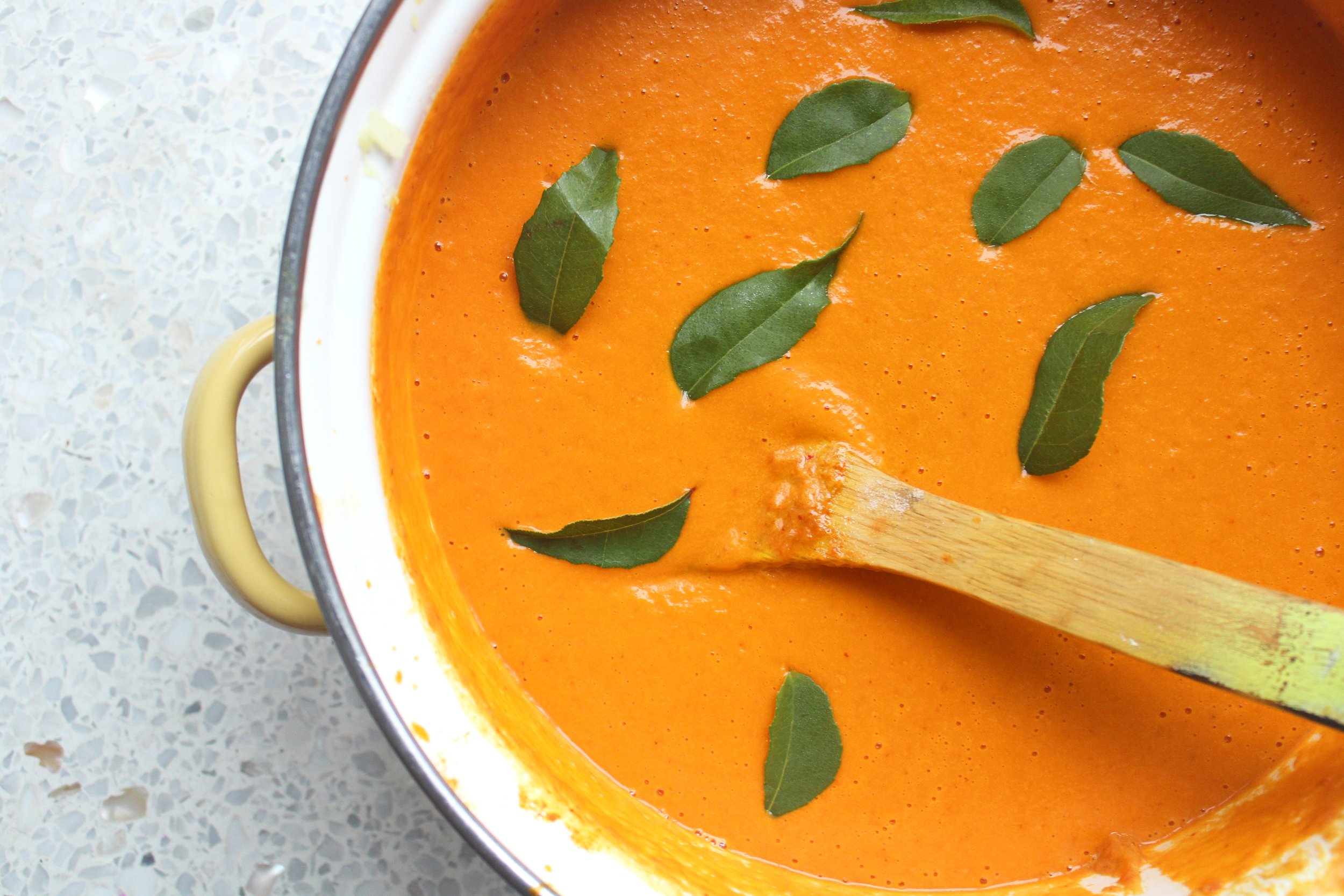“I love a slurpy ramen soup but I also really love the chewy texture of ramen with a delicious sauce. I’ve been making a version of the meatball recipe for years as an appetizer and I was in the mood for some yummy ramen noodles and thought a play on the comfort of spaghetti and meatballs with an Asian-style flair would be fun. It was! And quite delicious!”
“In its purest form, Bak Chor Mee are noodles lightly tossed in a sauce made with liquid lard, soy sauce, Chinese vinegar, and sambal. Then the noodles are topped with ground pork and other delicious toppings. I never really thought to make this until I discovered locally made Umi Organic ramen noodles. It's so good that it’s become a rotating family and friends meal favorite. On meat free days, I also make a delicious vegan version that is just as fun to eat and takes me down my Singaporean childhood food memory lane.”
“Shanghainese adore their noodles, and at one of my favorite hole-in-the wall noodle shops, I loved getting sesame noodles. During Covid, when we were all stuck at home, I was rummaging in the fridge and had an epiphany for a hack to make my favorite noodles: I used sesame hummus! It brought back many happy memories.”
This recipe is inspired by the wonderful Japanese classic agedashi tofu, but takes it in the direction of a teriyaki dish, coating the lightly fried tofu pieces in our Umi Organic yakisoba sauce. The tofu is not at all greasy—one of the miracles of this cooking technique. This is very easy to make and a textural treat. I like keeping the tofu pieces large so you get to enjoy their contrasting textures after frying. I typically eat this over rice but it would be great over Umi noodles in a miso sesame sauce.
The year I lived in Kyoto, Japan, I traveled to Korea over winter break. On Christmas morning, in the freezing cold, I was walking to catch a bus and came upon a street food vendor making breakfast sandwiches. The snow had begun to fall and he let me shelter under his tarp while he made me a very simple cabbage-egg omelet that he served between big fluffy slices of white bread with a delicious sauce that reminded me of Japanese okonomiyaki sauce. I loved the sandwich so much! It felt vaguely healthy but also rich and satisfying. When we made our own yakisoba sauce, with some of those same flavor notes, I knew I wanted to try to recreate this breakfast sandwich.
Pan-frying whole chicken thighs briefly, then steaming them with a little sake, and finishing with our Umi yakisoba sauce makes the most succulent and delicious teriyaki-style chicken. It’s also incredibly easy to make and goes with any side dishes you’d like! It’s not a typical teriyaki because our sauce has a more complex, umami-rich sweet-and-sour flavor thanks to Worcestershire, tamarind, and apple puree, but it’s definitely in the same family and scratches the same itch!
I find mushrooms spectacularly delicious and satisfying. This dish highlights shiitake mushrooms—every single bite of noodles is tangled with a few mushrooms, which means every bite is a winner. While this recipe calls for shiitake, any number of mushrooms would work well in their place: oysters, criminis, lobsters, chanterelles—any mushrooms that tastes good sautéed in oil. This is now my favorite way to eat yakisoba noodles!
“This is a Filipino noodle dish that originated from the Chinese community that settled in the town of La Paz. Traditionally, it is made with pork and pork offal cooked in a beef and pork stock. It uses egg noodles and is topped with chicharron, fried garlic, scallions and a raw egg that cooks in the hot broth. It is a nourishing dish that is full of umami coming from a rich bone broth and shrimp paste. This is a variation of that dish I use at home made for how we live now and I find it is amazing with Umi Organic’s ramen because of the noodle’s amazing bite.
“This combines three of my favorite things, latkes, bagels and crispy crunchy noodles. When I first cooked Umi Organic's yakisoba noodles I was blown away by how incredibly crispy and delicious the noodles were and I really wanted to highlight that!”
The combo of cream and chickpea or white miso is a little known secret. Just those two ingredients are unbelievably delicious together—salty, rich, deep, clean, lip-smacking. I can go on! Here, these two join a little sautéed garlic and some vegetables for a perfect, satisfying vegetarian Japanese pasta. It really does feel like Italian pasta reborn in Japan—the best of both worlds!
Of course, lo mein using our yakisoba noodles! Lo mein—soy-forward stir-fried noodles—descends from Chinese cuisine but has become a distinctly Chinese-American dish. This is such a quick and delicious meal, very kid friendly, and a great template for all kinds of greens! it wouldn’t be unheard of to eat this with a side of wontons!
Our Umi miso pesto is smooth and creamy and works beautifully as a dressing for boiled noodles. The word pesto is a little misleading but the cornerstones are there: umami in the form of miso instead of parmesan; herbs, in this case cilantro instead of basil; nutty richness through sesame oil instead of pine nuts or walnuts; and richness through sunflower oil instead of olive oil. I like just Umi noodles tossed in pesto as a whole meal, but it’s great with some sliced ripe tomato in season, wedges of roasted winter squash, or something more substantial like panfried chicken or tofu.
Kourtney Paranteau shares the newest entry to her cold weather repertoire: a curry noodle stew with butternut squash. The squash is added at the end as an equal to the noodles, and sits in the delicious tomato and coconut broth, adding another layer of texture and flavor. The broth is thick and stew-like but this vegetarian dish won’t drag your evening down with it.
Even during this unfathomably hot summer, I can’t go more than a few weeks without my favorite noodle dish tugging at my appetite: dandan noodles. I love dandan more than anything: chewy noodles tossed with ground pork and richly flavored with sesame paste and Sichuan peppercorn. To satisfy my year-round comfort food cravings, I’ve created a variation designed for the heat. This cold dandan noodle bowl features chilled Umi Organic ramen noodles and swaps the traditional preserved greens for a light, raw pea shoot salad.
This one is super summery, light but satisfying! It features lettuce, crunchy vegetables, and my favorite trick, quick pickled radishes, which become a beautiful shade of Barbie pink. This takes almost no time to make, but the radishes are most beautiful if you let them sit at least an hour after making them. I make too many at once and eat them over a few days.
This is a very literal, pared down riff on hiyashi chuka, the Japanese summertime classic of cold ramen noodles in a sesame dressing. We’ve made the dressing for you! All you need is a bit of leftover chicken (or panfried tofu or mushrooms!), a cucumber, a handful of tomatoes, green onion, and if you’re anything like me, chili oil. I dare you to take more then 3 minutes to boil and assemble this whole thing! It’s instantaneous and wonderful. A mid-summer classic.
Cooking has been brutal with the temperature inside my home at 95 degrees. One thing that is helping me enormously is the ease of our Noodles with Miso Sesame Sauce, and cold noodle salads generally. I put water on to boil, rinse and prep a few veggies (or in this case, just open a jar of Choi’s kimchi!), walk away, sit in front of our box fan, come back once the water is sputtering, boil the noodles for 2 minutes, toss with sauce, top with toppings, and that’s it! It’s as low maintenance as a sandwich and infinitely more texturally interesting and fun to eat.
I’ll be honest: This recipe Naomi shared with us is for a committed home cook. Why? Because the first step is to make shio dare, a flavor base used more often as the foundation for a bowl of hot ramen soup. If you don’t mind a small project, jump over to the shio dare recipe, make a batch, and then make this, which might be my favorite cold noodle salad that exists! (Once the shio dare is made, this is a literal breeze.) Naomi Molstrom goes all the way in her commitment to crunch. The chewiness of Umi noodles is so outstanding in this dish, and the contrast with all the crunchy vegetables makes this a textural delight.
Katherine Deumling of Cook with What You Have shares her recipe for an Umi noodle salad with peas, peanuts, cilantro and mint. It’s really perfect. It takes almost no time to cook (a gift on very hot days) and tastes refreshing and flavorful. This is your new go-to for noodle salad daze and days.
Kourtney Paranteau never stopped loving the “Asian-inspired” chicken salads that filled chain restaurant menus of her youth, even if she was embarrassed to admit it, but as she got older she realized she could make an even better version. Here is her take in this classic, with preserved kumquats replacing sad tangerine segments, a silken miso dressing rather than sticky and sweet one, and deep fried Umi yakisoba noodles for irresistible crunch.
There’s only one way to improve upon the pure culinary genius of birria ramen: use Umi Organic noodles. And you don’t have to use take-out birria consomé (broth) or spend hours making it—by using a pressure cooker and boneless stew meat, this pared-down version of the exquisite Mexican stew makes it a more weeknight-friendly endeavor without sacrificing any of the complexity.
This is my adaptation of a Fuchsia Dunlop recipe from her book The Food of Sichuan. She writes, “The following is my own re-creation of a legendary and unique version of dandan noodles served in a tiny restaurant near Sichuan University… These noodles are not for the faint-hearted—they are shamelessly spicy, but utterly delicious.” These dan dan noodles were even more satisfyingly delicious than I’d imagined AND it took almost no time to make, which shocked me. This is going to become a regular thing. If Fuchsia Dunlop’s is a re-creation, then mine is even one step further removed—an adaptation of a re-creation. I’ve changed some of the promotions I hope you will make it your own.
Ready for a weekend project? Our friend Naomi Molstrom shares her recipe for delicious classic Japanese shio chicken ramen!
Naomi is the maser of inspiring from-scratch cooking. Chicken ramen is among Naomi’s favorites, and so we asked her to share some recipes. What follows is her chicken paitan broth and instructions on how to build a bowl. The word paitan means “white soup,” a reference to the cloudiness of the broth. As Naomi tells us, making broth is time consuming, but once everything is ready to use, making ramen is super quick. This is a recipe for someone looking for a kitchen project that yields a spectacular result.
“When I’m already assembling homemade dumplings, the extra labor of hand-making noodles isn’t worth the bragging rights, and Umi Organic’s ramen noodles remain the best store-bought ramen noodle I’ve encountered. This wonton soup rests handmade pork dumplings, bok choy, and bamboo shoots on a nest of Umi Organic Ramen Noodles, then floods the bowl with an aromatic ginger broth. This soup will sooth your lingering winter chills and surpass anyone’s cravings for chicken noodle soup.”
“I love the versatility of yakisoba. When I was growing up, my mom prepared yakisoba using pork, carrots, cabbage, onions, and bean sprouts. Since I live in Portland where we have access to a wide variety of vegetables on a year-round basis, I use whatever seasonal vegetables I have on hand for my yakisoba. I always aim for at least 5 colors in all of my meals and yakisoba makes it easy to achieve my goal.”
Local author, recipe developer, editor, gardener, creatinve genius and all around cooking inspiration Heather Arndt Anderson shares how to turn our Noodles with Miso Sesame Sauce and 1/2 pound of lamb stew meat into a sumptuous meal reminiscent of the rugged Xinjiang Province. Cumin and lamb are hallmarks of Uyghur cooking, and Umi’s chewy, bouncy noodles make a fine stand-in for traditional hand-pulled biangbiangmian.
Creating our perfect ramen egg has been something we’ve slowly worked on as we prep for one farmers market after another. What are we looking for in a great ramen egg? The white should be cooked, though tender. The yolk should start runny, but time spent in a salt-brine should cure the yolk, deepening the color to a vivid orange and transforming the texture into something jammy, gooey, akin in texture to dulce de leche. The egg should taste savory but not aggressive. Here are our rules of the road and recipes for steaming and boiling our perfect ramen egg.
This recipe shared enthusiastically with us by Katherine Deumling of Cook with What You Have is incredibly simple, and that’s the beauty. You’ll have to start with a store-bought or homemade broth, but once that’s in the bag, the rest comes together easily. The salmon recipe, on its own, is a keeper! Katherine is right: The fresh ginger is the key here!






























I was delighted when I experimented by using our Organic Yakisoba Sauce in place of classic Otafuku or Bulldog Okonomiyaki Sauce. It works like a dream! In fact, I insist: try it out! It’s so special!
In the Kansai region, where okonomiyaki was invented and where I lived (Kyoto, Osaka, and Kobe are all within Kansai), the ingredients are all mixed together and cooked as one mass. Many regions have their own adaptations—the other most famous style comes from Hiroshima—but the Kansai version is the easiest to make. I like to eat this with rice and miso soup.